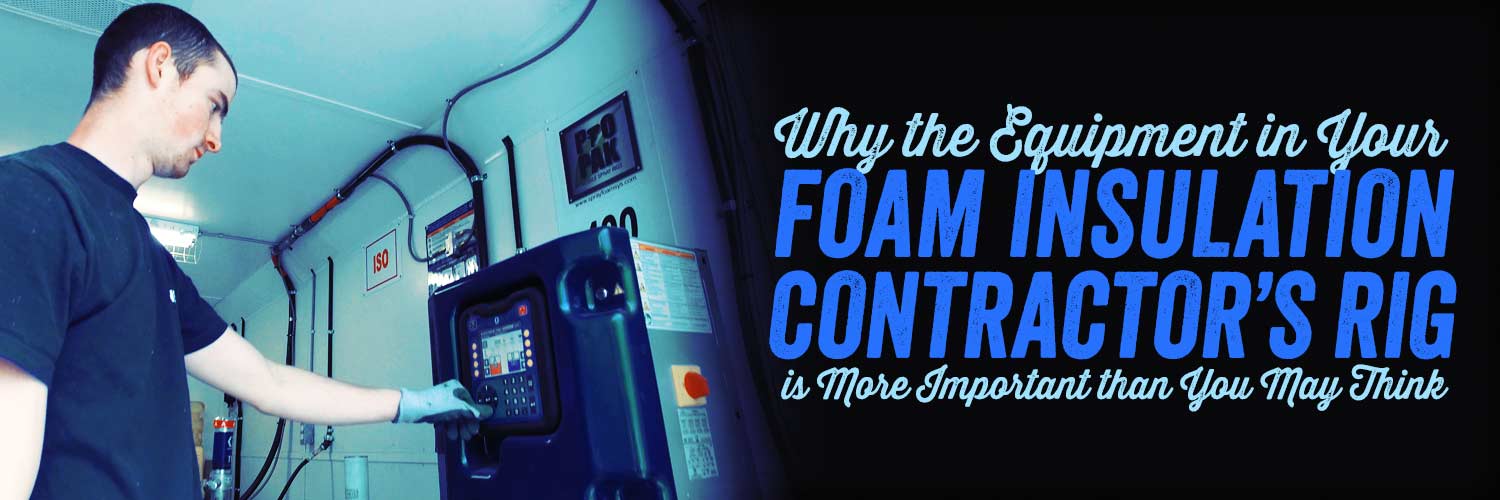What’s Inside Your Foam Insulation Contractor’s Rig? Here’s Why the Equipment Matters


You’re in the market for a nice, souped-up car.
You want performance, a powerful engine, and all of the bells and whistles. You can’t expect the performance of a Challenger in the body of a car with around 120-horsepower. It doesn’t mean the other car is less than, it just means you should have different expectations of the job the car will do.
The same is true for the rigs your foam contractor uses. See what I did there? I got you super excited about cars and switched it up to talk about spray foam rigs.
The cost to buy a foam insulation rig varies between $10,000 all the way up to $150,000. That cost difference means those rigs and that spray foam equipment are capable of completely different things when it comes to installation.
RetroFoam of Michigan has several injection foam and spray foam rigs in our fleet and have opted for the best that money can buy because we want to give the homeowners we work with the best outcome for their home insulation needs.
Now let’s break down what is inside those rigs and why that equipment matters.
Spray Foam Insulation Equipment
Foam contractors just getting started in the business usually buy the cheaper rigs because this is their first time to the rodeo.
There is one issue with this – some of these contractors don’t have experience installing foam and those rigs don’t have the checks and balances that the more expensive rigs have.
What does that mean for a homeowner? It means the room for error is pretty big and because they don’t have the experience and training, they won’t know how to fix it. Just starting out, these contractors also won’t know what bad foam looks like.
Some of the spray foam problems that come with this are off-ratio spraying of the foam, bad odors, and lack of adhesion. If the foam isn’t mixed properly in the rig it can cause the insulation material to pull away from the cavity where it has been applied.
Another problem due to the lack of experience on top of the problems listed previously is the foam might be sprayed too thin, so it doesn’t create an air barrier.
The higher end spray foam rigs make it literally impossible to spray bad foam. That’s because the technology inside the rig ensures the foam is mixed perfectly every time right there in the trailer.
That tech also makes sure the foam is the correct temperature no matter what the weather is outside – the rig is that intuitive that it figures in the outside temperature when mixing the foam inside the trailer.
Another piece of tech to consider is the generator. Higher end rigs have a generator right there that runs everything inside the trailer. The less expensive rigs don’t have this, and, in some cases, this can lead to a dangerous practice.
There are some installers that will run two bare wires into the home to the breaker box. They hook those wires into a 220 breaker to run the rig during the installation. This is definitely a practice we don’t recommend and neither would a good contractor.
All-in-all this isn’t to say that the less expensive rigs are bad, it comes down to training and experience. A foam insulation contractor who focuses on keeping their crew up-to-date on training could use any rig and get a good outcome.
Hiring a Foam Insulation Contractor for Your Home
It doesn’t hurt to ask questions about the installation process, as well as the equipment the foam contractor plans to use.
You want to use a vetting process when considering a foam insulation contractor so that you don’t end up with costly problems in the long run.
About Amanda Ringler
Amanda previously has worked as a breaking news and crime reporter, TV news producer, and editor in Flint and Detroit. Throughout her career as a journalist, she has won several awards from The Society of Professional Journalists - Detroit Chapter and the Michigan Press Association. As part of the RetroFoam of Michigan family, Amanda uses her experience as a journalist to write content that will help educate homeowners on the benefits of foam insulation. When Amanda isn’t writing, she’s spending time with her husband and rescued huskies. She also loves knitting, making art, cooking, and hosting dinner and a movie night for friends and family.

.jpg)
